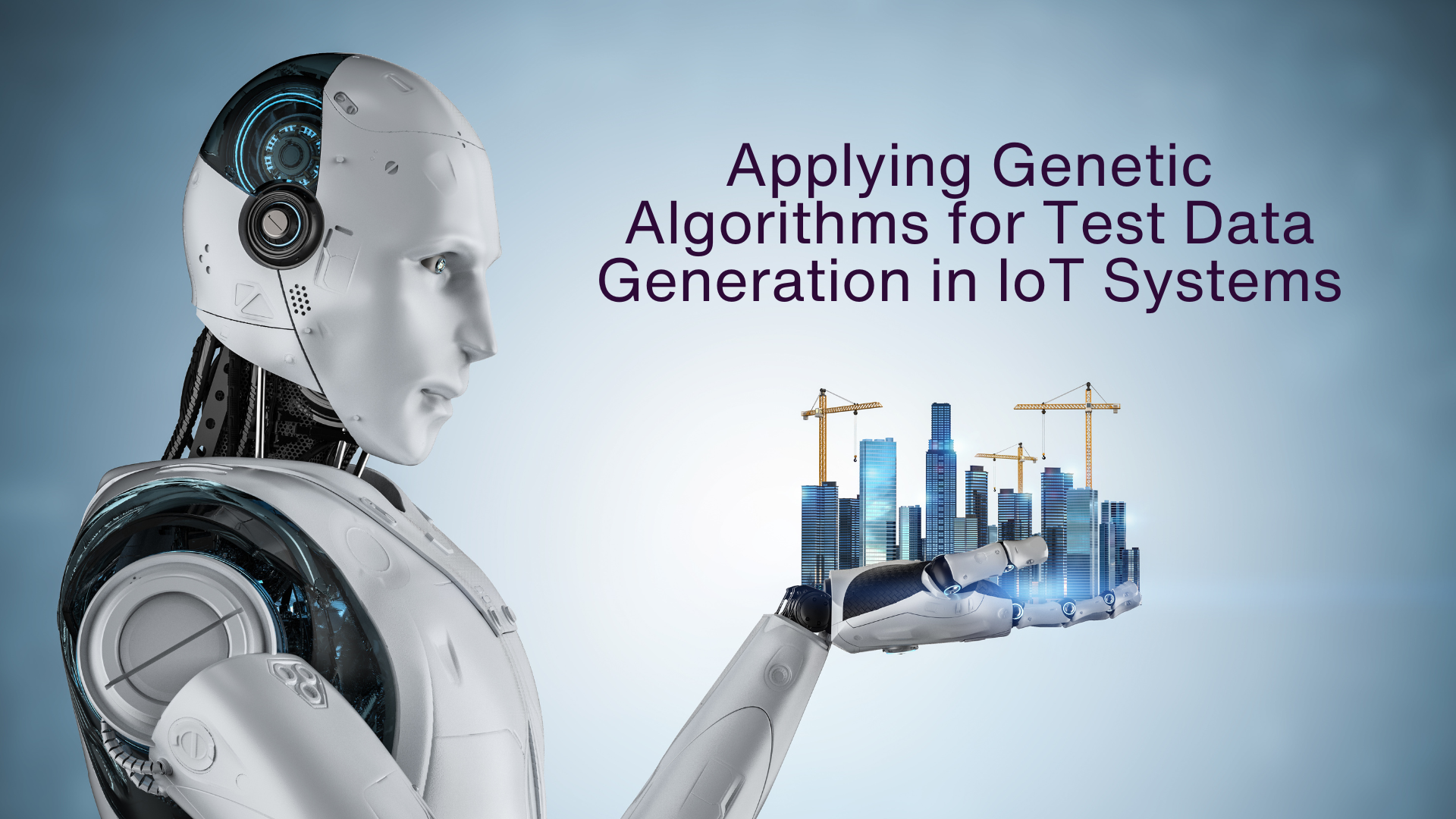Applying Genetic Algorithms for Test Data Generation in IoT Systems
 Kavitha R
Kavitha R
The Internet of Things (IoT) has revolutionized the way we interact with technology, enabling interconnected devices to communicate and share information seamlessly. However, developing and testing IoT systems poses unique challenges due to their complexity. One critical aspect of ensuring the reliability and functionality of IoT systems is test data generation. In recent years, Genetic Algorithms (GAs) have emerged as a promising approach for creating diverse and representative test data sets. This article explores how Genetic Algorithms can be leveraged for test data generation in IoT systems, enhancing their performance and robustness.
Understanding Genetic Algorithms
Genetic Algorithms are a class of evolutionary algorithms inspired by natural selection and genetics. The central idea behind GAs is to mimic the process of evolution by evolving a population of potential solutions over successive generations. These algorithms rely on concepts such as selection, crossover, mutation, and fitness evaluation to guide the search for an optimal or near-optimal solution.
Test Data Generation in IoT Systems
IoT systems typically involve various interconnected components, each with its unique set of behaviors and states. Designing effective test data sets for such systems is challenging due to their large parameter spaces and complex interactions. Traditional random or rule-based test data generation may not adequately cover the entire spectrum of possible scenarios, leaving critical edge cases untested.
Genetic Algorithms present a powerful alternative for generating comprehensive test data in IoT systems. By using an evolutionary approach, GAs can explore the parameter space effectively and create diverse test cases that encompass different combinations of input values, states, and system interactions.
Applying Genetic Algorithms to Test Data Generation
Encoding the Test Data: The first step in applying GAs for test data generation is to encode the test data in a suitable format. The encoding process involves representing test cases as chromosomes, where each chromosome corresponds to a potential solution (test case).
Fitness Function: A critical aspect of GA-based test data generation is defining a fitness function. The fitness function evaluates the quality of a test case based on specific criteria, such as code coverage, boundary values, and functional requirements. The better a test case meets these criteria, the higher its fitness score.
Initialization: The GA starts with an initial population of test cases, typically generated randomly or using domain knowledge. This initial population may not be optimal, but the GA will evolve it towards better solutions through subsequent generations.
Selection: In each generation, the GA selects individuals (test cases) from the population based on their fitness scores. The fitter individuals have a higher chance of being selected, but even less fit individuals have some probability of being chosen to maintain diversity.
Crossover: Selected individuals undergo a crossover process, where parts of their encoded data are exchanged to create new offspring. This crossover mimics the genetic recombination observed in nature.
Mutation: Occasionally, the GA introduces random changes in the offspring's encoded data to promote further exploration of the search space. This mutation adds genetic diversity to the population.
Termination: The GA evolves test cases through multiple generations, and the process continues until a stopping criterion is met, such as reaching a maximum number of generations or achieving a specific fitness threshold.
Benefits of Genetic Algorithms for IoT Test Data Generation
Comprehensive Test Coverage: Genetic Algorithms enable the generation of diverse and representative test data sets, covering a wide range of scenarios and edge cases, ensuring better coverage of the IoT system's behavior.
Reduced Test Data Bias: GA-based test data generation helps reduce potential biases introduced by manual or rule-based test data creation, leading to more objective and thorough testing.
Scalability: IoT systems often have a vast parameter space, making exhaustive testing impractical. GAs offer a scalable approach, efficiently exploring the parameter space and generating relevant test data.
Robustness: By focusing on fitness-based selection, GAs tend to prioritize test cases that reveal system vulnerabilities and weaknesses, leading to more robust IoT systems.
Conclusion
The Internet of Things has permeated every aspect of our lives, making robust and reliable IoT systems more critical than ever. Genetic Algorithms offer a powerful solution for generating test data that effectively evaluates the functionality and robustness of these complex systems. By leveraging the principles of natural selection and evolution, GAs provide a scalable and comprehensive approach to test data generation in IoT systems, improving their overall quality and performance. As IoT technology continues to advance, embracing innovative techniques like Genetic Algorithms will be vital in ensuring the seamless integration and functionality of IoT devices in our daily lives.
Subscribe to my newsletter
Read articles from Kavitha R directly inside your inbox. Subscribe to the newsletter, and don't miss out.
Written by

Kavitha R
Kavitha R
Test Automation Evangelist | Overcoming Software Testing Challenges | Tenjin Online | Codeless Test Automation